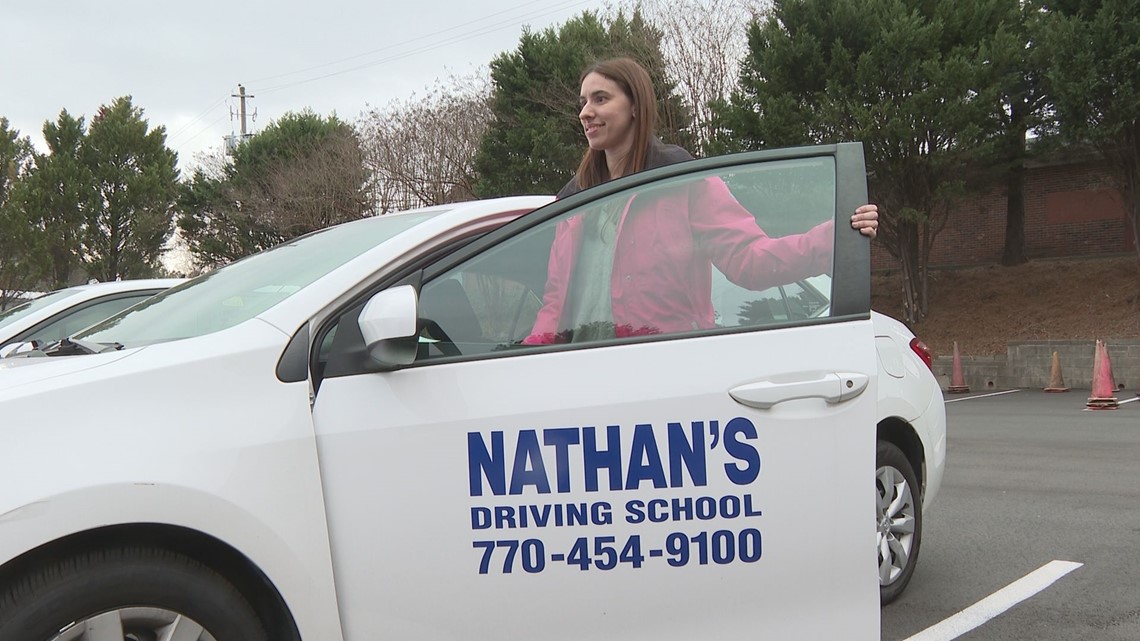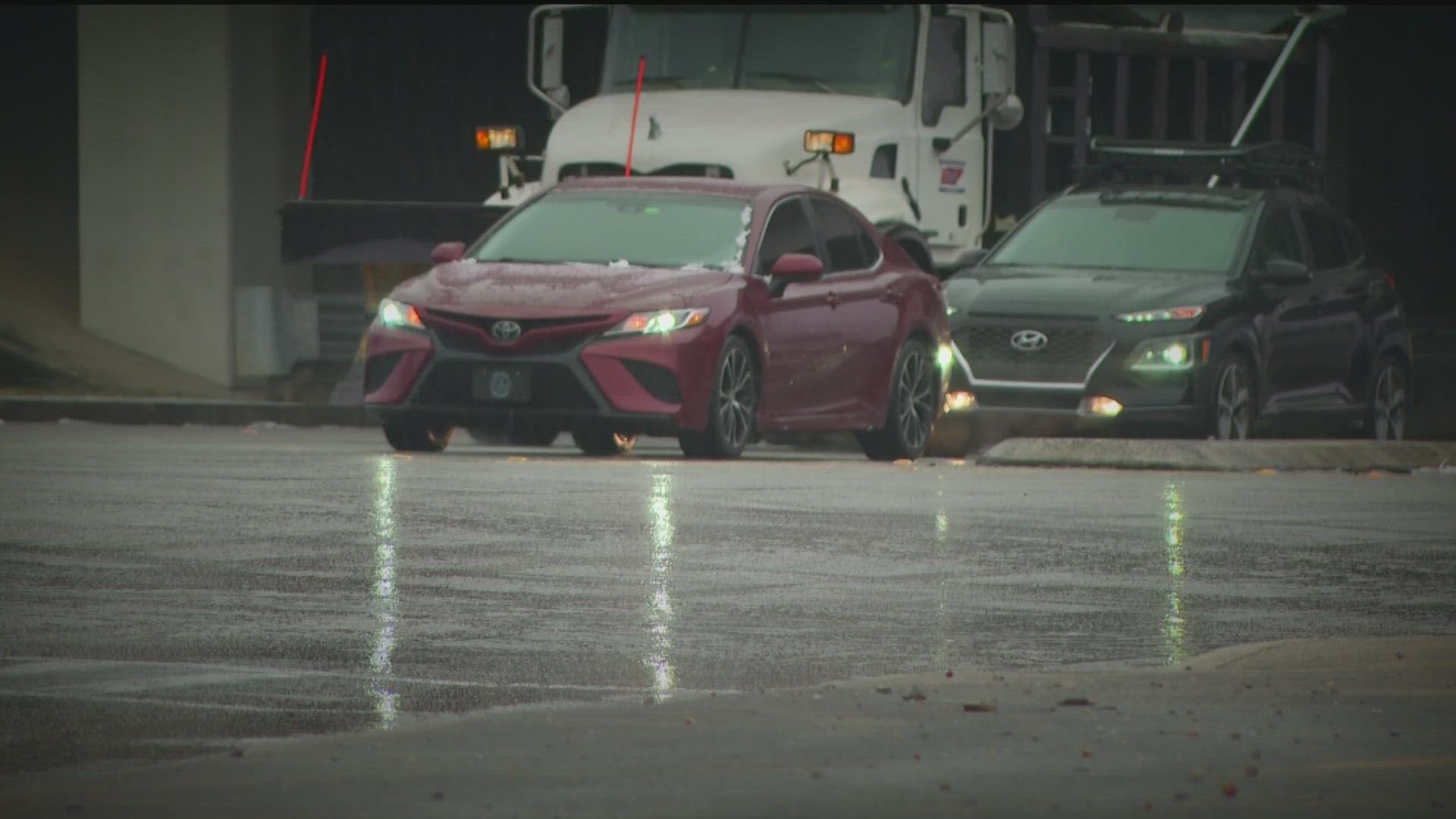BROOKHAVEN, Ga. — At the Georgia Department of Transportation, this week's daily routine is mixing brine and coating the roads ahead of freezing temperatures and wintry precipitation.
"(The brine) does help us a lot. When a little precipitation comes out, the roads don't freeze, then, so it's a preventative measure," said Elizabeth Johnson, district communications officer for the Georgia Department of Transportation's northeast region. "There's a lot of valleys and a lot of mountains... we are preparing right now for some precipitation."
In case that precipitation turns to ice, we asked Nathan's Driving School in Brookhaven how to get around safely.
"We're in the South. We're not used to driving in this kind of weather," said Rachel Marie Galotti, vice president of Nathan's Driving School. "Our roads are not prepared for it. Our cars are not prepared for it. And then mentally, we're not prepared for it. So it's dangerous. The first thing we suggest to students is if you don't have to drive, don't drive."
If you do have to leave, she recommends checking your car first for things like a good amount of tire tread, sufficient tire pressure and working windshield wipers.
"The times of day that are most dangerous are early in the morning and late at night and that's because that's when it's colder," she said. "Areas that you have to really worry about are black ice. It's called black ice not because of the color of the ice but because it blends in with the pavement."


Galotti said black ice tends to form first on overpasses and bridges. During the day, it can appear in shady places like the end of driveways and around curvy roads where you might not expect it.
"It's going to be unexpected and it's going to be scary... the first thing that you need to do is not panic," Galotti said, acknowledging that's easier said than done. "When you oversteer or you steer in the wrong direction, that's when you spin, or you'll get into an accident or collision because you panicked."
Instead, she said drivers should firmly grip their wheels to regain control of the car.
"If you start to turn a certain way, you want to turn into that ever so slightly. You don't want to make strong movements... You don't want to slam on your brakes again," she said. "You want to take your foot off the gas. Hopefully, that'll slow down enough where you just slide a little bit, and then you'll be back on the pavement."
You should also aim for an area with more traction, she said.
"That could be a snowbank. It could be the rumble strip. It could be the upcoming road where you know it's clear that's what you want to aim for," Galotti said. "It usually will happen in a matter of seconds, so you as long as you take your time to think through it, to remain calm — you'll be out of it."
She also recommends driving slower than the speed limit and leaving extra following distance between cars.
"You want to make sure that you're driving with a speed for the conditions, which doesn't mean driving the speed limit," she said. "You need to go under that if it's raining if it's snowing if it's icy. In the south, things can change very quickly."

